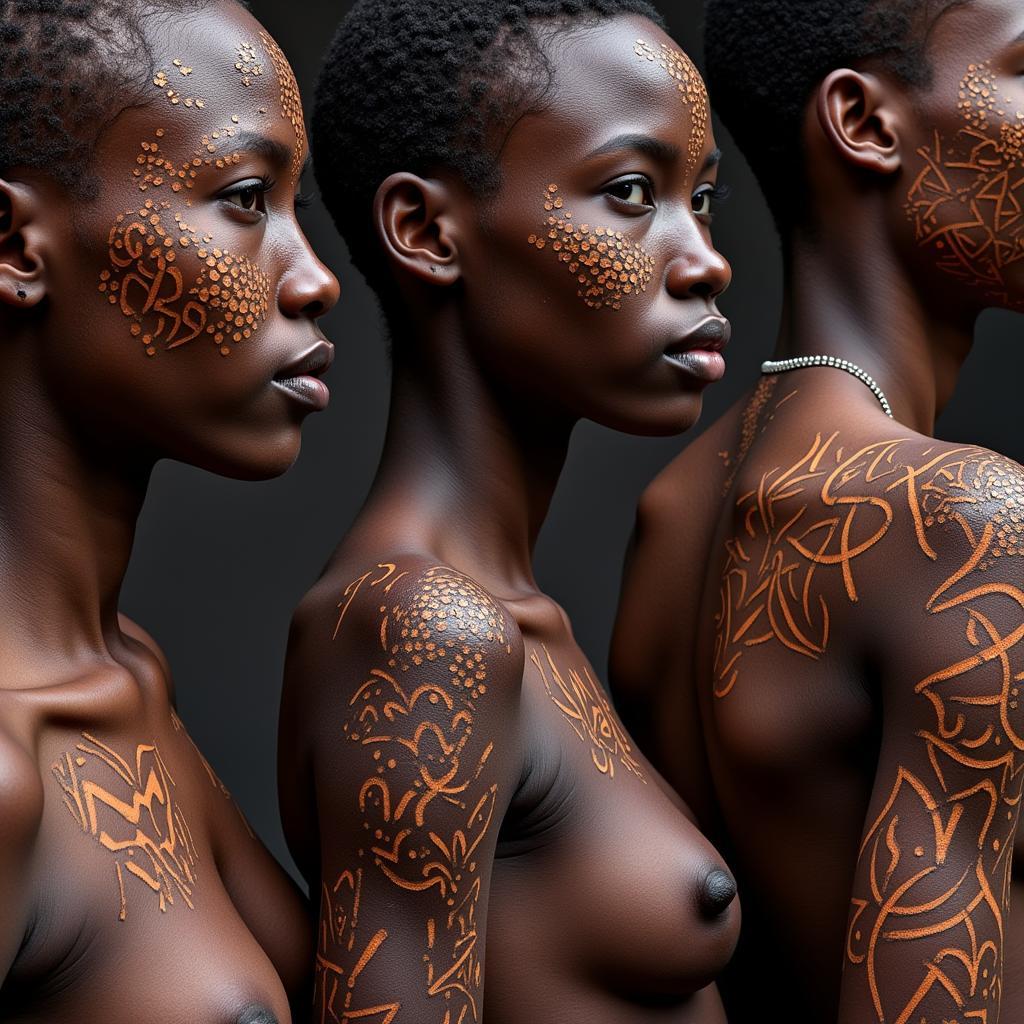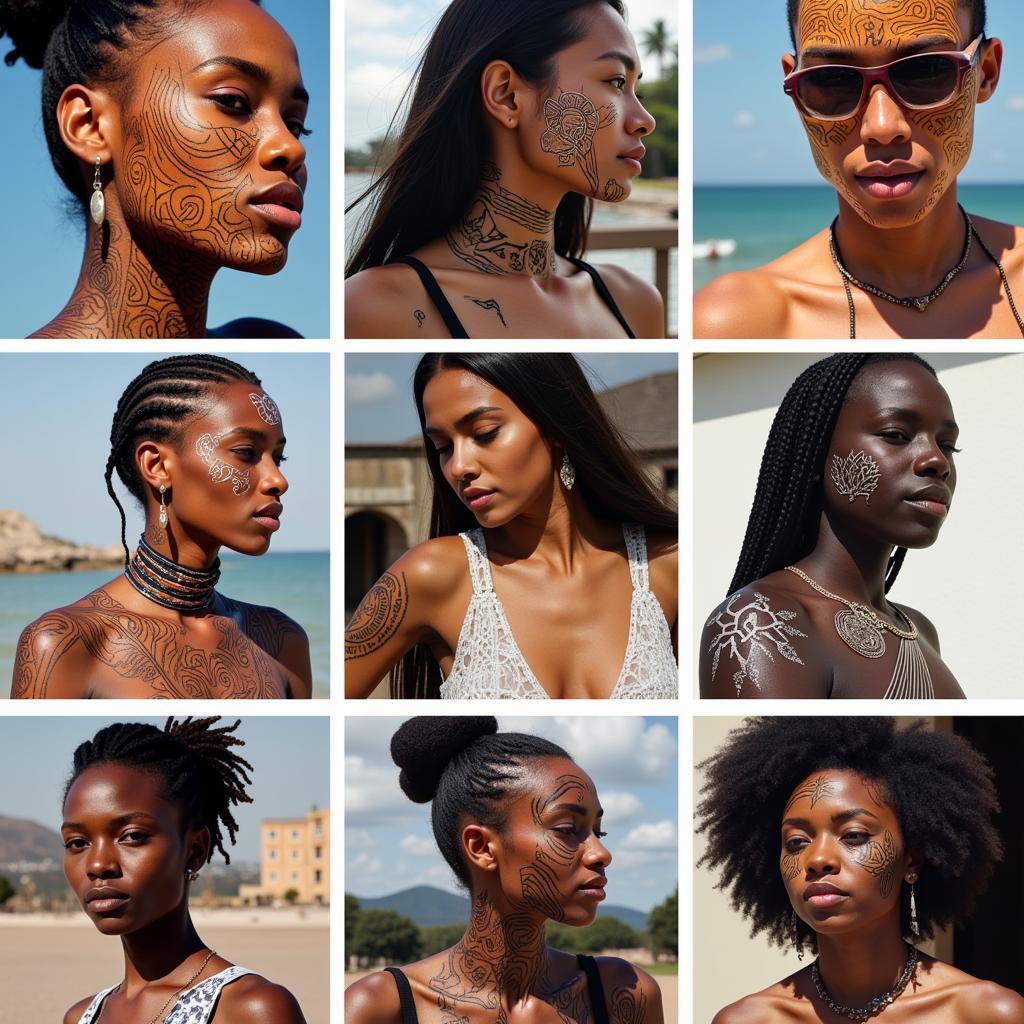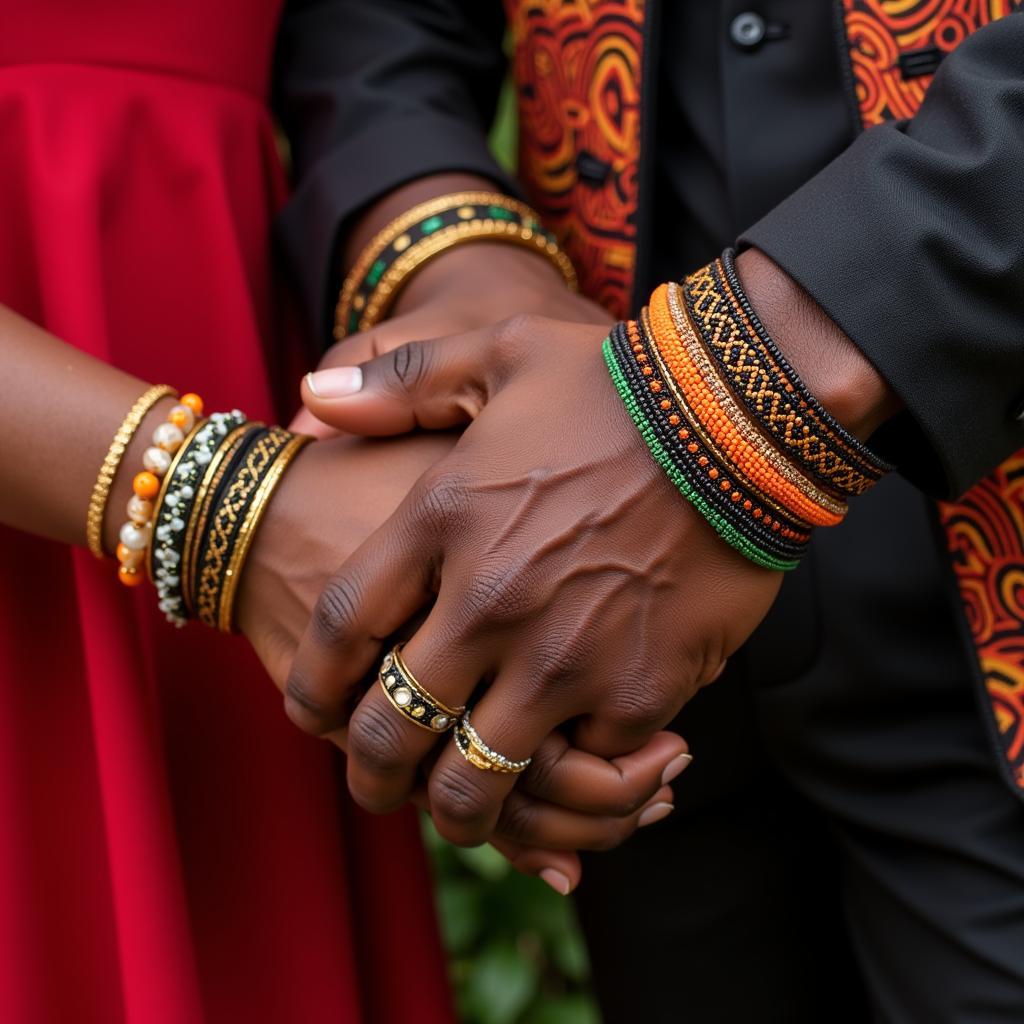Unveiling the Art of African Cicatrization: A Journey Through History, Culture, and Identity
African Cicatrization, a practice deeply rooted in tradition and symbolism, has left an indelible mark on the continent’s cultural landscape. More than mere body modification, these intricate scars whisper tales of lineage, courage, and belonging, offering a glimpse into the diverse tapestry of African Life.
 Intricate African Cicatrization Patterns
Intricate African Cicatrization Patterns
A Legacy Etched in Skin: The Significance of Scarification
Across the African continent, cicatrization serves as a powerful visual language, communicating a myriad of meanings. From marking rites of passage and signifying social status to conveying religious beliefs and enhancing beauty standards, these scars narrate the individual and collective stories of communities.
For young men coming of age, enduring the pain of scarification often marked their transition into adulthood, showcasing their strength and readiness for responsibility. In some cultures, intricate patterns etched onto women’s bodies symbolized fertility and attractiveness, enhancing their allure according to traditional aesthetics.
Beyond the Surface: Techniques and Symbolism
The artistry of African cicatrization lies in the skilled hands of practitioners who employ various techniques to create these permanent markings. Using sharp instruments like knives, blades, or thorns, they meticulously cut or pierce the skin, manipulating the healing process to achieve raised or indented scars.
The application of natural irritants, such as plant sap or ash, during the healing process further influences the scar’s texture and appearance. These methods, passed down through generations, reflect a deep understanding of the human body and its ability to heal and transform.
A Cultural Legacy Facing Modernity
While cicatrization remains a significant cultural practice in certain African communities, its prevalence has declined in recent times due to factors like modernization, urbanization, and evolving beauty standards. However, the art form continues to captivate and intrigue people worldwide, sparking conversations about cultural identity, tradition, and the evolving relationship between the body and self-expression.
“Cicatrization, far from being a relic of the past, offers a lens through which we can appreciate the resilience and adaptability of African cultures,” notes Dr. Abeni Adeola, an anthropologist specializing in African body art. “These scars tell stories of survival, resilience, and the enduring power of cultural heritage.”
 Modern Interpretations of African Cicatrization
Modern Interpretations of African Cicatrization
Conclusion
African cicatrization stands as a testament to the power of human resilience, creativity, and the deep connection between body and identity. These intricate scars, far from being mere marks on the skin, offer a window into the diverse cultural tapestry of Africa, inviting us to appreciate the beauty and complexity of its traditions.



